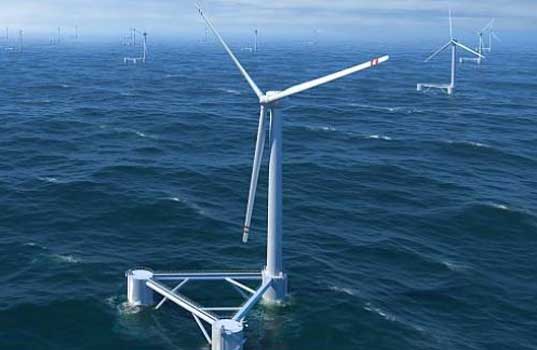The U.S. Department of Energy has selected of three pioneering offshore wind demonstrations to receive up to $47 million each over the next four years to deploy innovative, grid-connected systems in federal and state waters by 2017.
These projects – located off the coast of New Jersey, Oregon and Virginia – will help speed the deployment of more efficient offshore wind power technologies.
Building on the Energy Department’s broader efforts to launch a competitive and sustainable offshore wind industry in the United States, these demonstration projects will help further lower costs, drive greater performance and clear hurdles to installing more utility-scale turbines in U.S. waters.
“Offshore wind offers a large, untapped energy resource for the United States that can create thousands of manufacturing, construction and supply chain jobs across the country and drive billions of dollars in local economic investment,” said Energy Secretary Ernest Moniz. “The Energy Department is working with public and private partners to harness this untapped resource in a sustainable and economic manner. The offshore wind projects announced today further this commitment — bringing more clean, renewable energy to our homes and businesses, diversifying our energy portfolio, and reducing costs through innovation.”
In December 2012, the Energy Department announced seven offshore wind demonstration projects, which have focused on design, engineering, and permitting work. The three projects selected today are aimed at deploying offshore wind installations in U.S. waters by 2017:
Fishermen’s Energy will install five, 5-megawatt direct-drive wind turbines approximately three miles off the coast of Atlantic City, New Jersey. This project will utilize an innovative, U.S.-developed twisted jacket foundation that is simpler and less expensive to manufacture and install than traditional offshore wind foundations. Fishermen’s project will act as a laboratory for researchers to learn about offshore wind and investigate interactions between turbines.
Principle Power will install five, 6-megawatt direct-drive wind turbines approximately 18 miles off the coast of Coos Bay, Oregon. The U.S.-developed WindFloat semi-submersible floating foundation will be installed in water more than 1,000 feet deep, demonstrating an innovative solution for deep water wind turbine projects and lowering costs by simplifying installation and eliminating the need for highly specialized ships. More than 60 percent of U.S. offshore wind resources are found in deep waters, including the entirety of the West Coast. Deploying offshore wind technologies for deeper water can help capture resources that are found in waters too deep for traditional bottom-mounted foundations.
Dominion Virginia Power will install two, 6-megawatt direct-drive wind turbines 26 miles off the coast of Virginia Beach, utilizing a U.S.-designed twisted jacket foundation. Dominion’s project will demonstrate installation, operation and maintenance methods for wind turbines located far from shore. Additionally, the Dominion project will install and test a hurricane-resilient design to ensure that offshore wind facilities placed in hurricane-prone U.S. waters are reliable, safe, and cost-effective.
The proposals from the University of Maine and from the Lake Erie Energy Development Corporation (Leedco) offered additional innovative approaches that, with additional engineering and design, will further enhance the portfolio of American offshore wind technology options. This includes concrete semi-submersible foundations as well as monopile foundations that reduce ice loading. The Department will continue to work with these teams to advance their designs to deployment readiness. Taken together, the innovations being developed and demonstrated will position the United States to lower the barriers to significant offshore wind, contributing to a low carbon future.
Filed Under: Financing, News, Offshore wind





